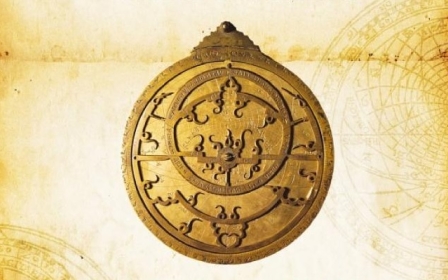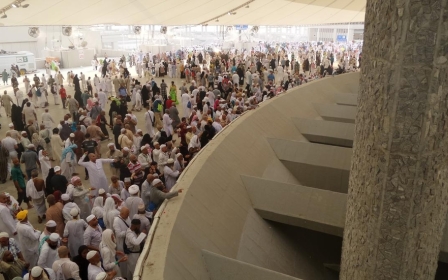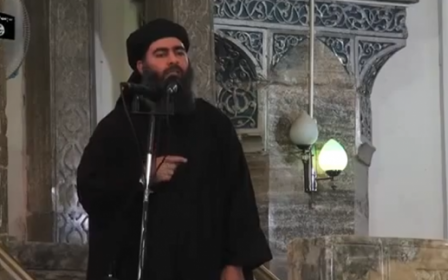Reviving traditional Sunni institutions helps combat terror

Sunni Islam is in turmoil. Over the last two decades, it has been in the grip of ferment and fragmentation unprecedented in its long history.
After the wave of radicalisation that had swept across Shiism following the Iranian revolution of 1979, it was the turn of Sunni Islam, which represents around 80 percent of Muslims worldwide, to seize the spotlight and move centre- stage, with the relentless rise of radical violent movements of the likes of al-Qaeda and ISIS.
The roots of Sunni Islam's ailments it must be noted are not entirely to do with religion, as most journalists, politicians and "experts" in Europe and across the Atlantic never tire of repeating. Rather than scripture and theology, it is in politics and economics, in power balances, foreign interventions and the scramble for influence and resources that the causes of its ills reside. Religious faith, sect and ethnic affiliations are spontaneously recalled, or wilfully exploited within the conflicts raging around the Muslim world, but are in reality neither their primary cause nor the sole key to their resolution.
Still, there is a real concrete problem characterising majority Sunni Islam: the profusion of religious and political voices pronouncing in its name, in disorderly, conflicting and confusing ways - a phenomenon from which Shia Islam has been largely immune thanks to the power conferred upon the clergy within the sect.
Sunni Islam has for centuries established itself as representing the majority's beliefs, or the Muslim ummah's faith, rather than being a mere sect, in contrast with the various other components of the Muslim landscape, which assumed the character of dissidents seceding from the mainstream. This gave Sunni Islam a sense of self-confidence and the ability to identify with the wider ummah and act as its voice, while other creeds remained limited expressions of angry dissident factions, even where they happened to seize power as with the Fatimid Shias who ruled Tunisia and Egypt between 909 and 1171 AD.
Theologically and historically, Sunni Islam has been largely egalitarian, in that it has denied anyone the right to monopolise the religious text, instituting a direct relationship between believers and scripture, free of any hierarchy. This created wide scope for flexibility and pluralism in the interpretation of the text, leading to the emergence of myriad intellectual and juristic Sunni schools.
Shiism on the other hand, underwent a sort of Catholicism through restricting the process of scriptural interpretation to the infallible imams and their successors, the clergy who provide the sects' adherents with requisite religious exegeses and are devoutly followed by them.
The problem of absence of a religious axis of gravity or guiding centre was resolved within Sunnism by establishing the authority of scholars (ulama) as the chief bearers of the legitimacy to interpret the religious text, while acknowledging the right to intellectual pluralism within the framework of ijtihad or free interpretation.
But Sunni Islam has undergone a brutal change over the last two centuries. The process of modernisation in the Muslim world has been associated with the growing role of the state and its bureaucracy as the chief, then eventually, sole actor and controller of the fates of Muslim societies. This phenomenon coincided with the fragmentation of the authority of scholars and the erosion of traditional learning institutions, which had been responsible for furnishing Muslim societies with meaning, values and symbols and maintaining their general equilibrium. This generated a vacuum filled with confusion and chaos, as amateurs and impostors came to intrude into the sphere hitherto occupied by qualified jurists and scholars.
The fates of Sunni religious establishments ranged between total obliteration, as was the case in Turkey, Tunisia, Iraq and Syria, and marginalisation and annexation as happened in Egypt, Indonesia and Malaysia. Egypt's al-Azhar turned into an arm of the state, used by successive rulers to bestow legitimacy on their power and political edicts. Tunisia's al-Zaytouna, established in 737AD, was closed down in the 1960s, then turned into a mere marginal branch of the post-independence Tunisian university.
Amidst the vacuum, disorder and erosion of the religious educational system, many intruders were able to penetrate into the deserted territory and claim the authority of pronouncing in the name of Islam and acting as the guardians of its adherents. Osama Bin Laden was an engineer while Ayman al-Zawahiri was doctor, both educated and trained in modern/post-colonial establishments.
Indeed, contrary to the dominant narrative that associates terrorism with religious education, it is rare to find a terrorist who had received solid instruction in a Sunni religious educational institution, even those that have lost their lustre. In fact, it is graduates from those schools and universities that are acting as powerful antidotes to extremist groups and the version of Islam they espouse.
No doubt, we cannot turn the clock back. The modernisation process is a firm reality in the Muslim world. Furthermore, the intellectual, or modern intelligentsia is now a factor of Muslim society. It has taken on aspects of the role traditionally played by the scholar. The challenge for Muslims today is to restore and revive Sunni Islam's enormous religious and scholarly heritage within a modern context, thus creating an amalgam of the profound and rich Islamic sciences and modern methods and disciplines.
In order to absorb the great tensions seething deep within Sunni Islam's guts and recover its equilibrium it is crucial to redeem the status and function of the traditional scholar not as the sole player on the arena or as the conscience of Sunni Islam, but as an intellectual authority of great moral influence and presence across Muslim society.
The key to this restorative process lies in the revival of the old educational Sunni establishments, taking into account the spirit of modernity and demands of the times, while preserving their autonomy and independence from the powers that be, thus imparting moral authority to their views and interpretations in the eyes of Muslims around the world.
Only then can we resurrect the traditions of openness and dialogue that had characterised those institutions and safeguard the Muslim body from the extreme tendencies of violent terrorist groups.
Take Morocco, for instance. Thanks to its active and influential religious institutions, foremost al-Qarawiyyin and Husseiniyya, it was able to weaken radical currents and deny them religious legitimacy. This stands in sharp contrast with the experiences of its neighbours in Algeria and Tunisia, where the dearth of local religious scholars has left society, mainly the younger generations, prey to the influence of extreme ideas and ill-equipped to challenge and isolate their proponents.
Reviving the authority of traditional learning institutions couldn't on its own act as a magical cure to the maladies of radicalism and terrorism. These feed on the political conflicts raging in the region. But it would no doubt help restore the stability of Muslim societies in a closely interconnected world, where crises can no longer be left to rage far away and inevitably spread closer home. To that the waves of wretched refugees crossing into Europe's shores to flee the Syrian abyss is a clear testimony.
- Soumaya Ghannoushi is a British Tunisian writer and expert in Middle East politics.
The views expressed in this article belong to the author and do not necessarily reflect the editorial policy of Middle East Eye.
Photo: A woman walks through the courtyard of Zitouna Mosque in the Medina of Tunis on 9 August, 2012 (AFP).
Middle East Eye propose une couverture et une analyse indépendantes et incomparables du Moyen-Orient, de l’Afrique du Nord et d’autres régions du monde. Pour en savoir plus sur la reprise de ce contenu et les frais qui s’appliquent, veuillez remplir ce formulaire [en anglais]. Pour en savoir plus sur MEE, cliquez ici [en anglais].





